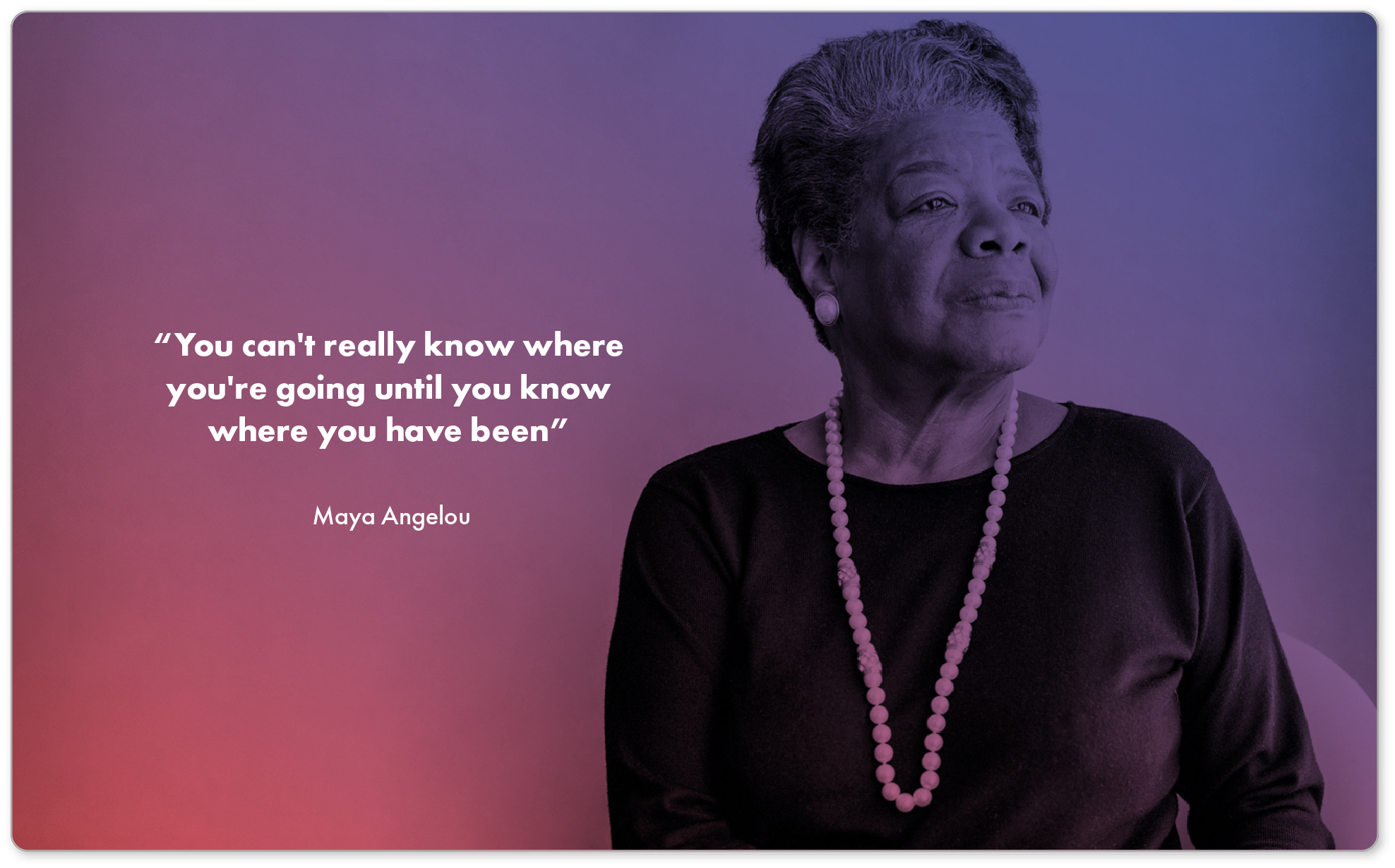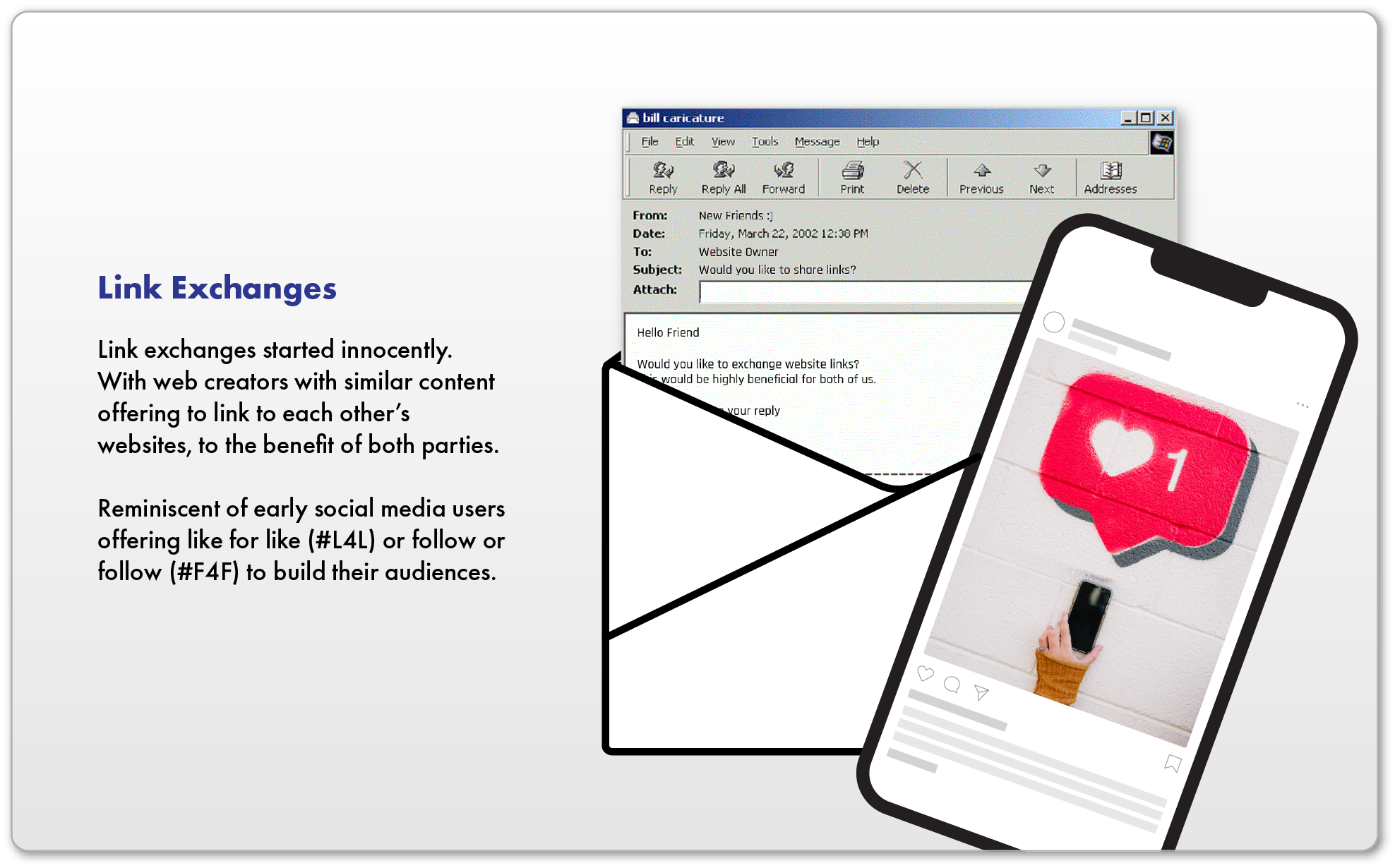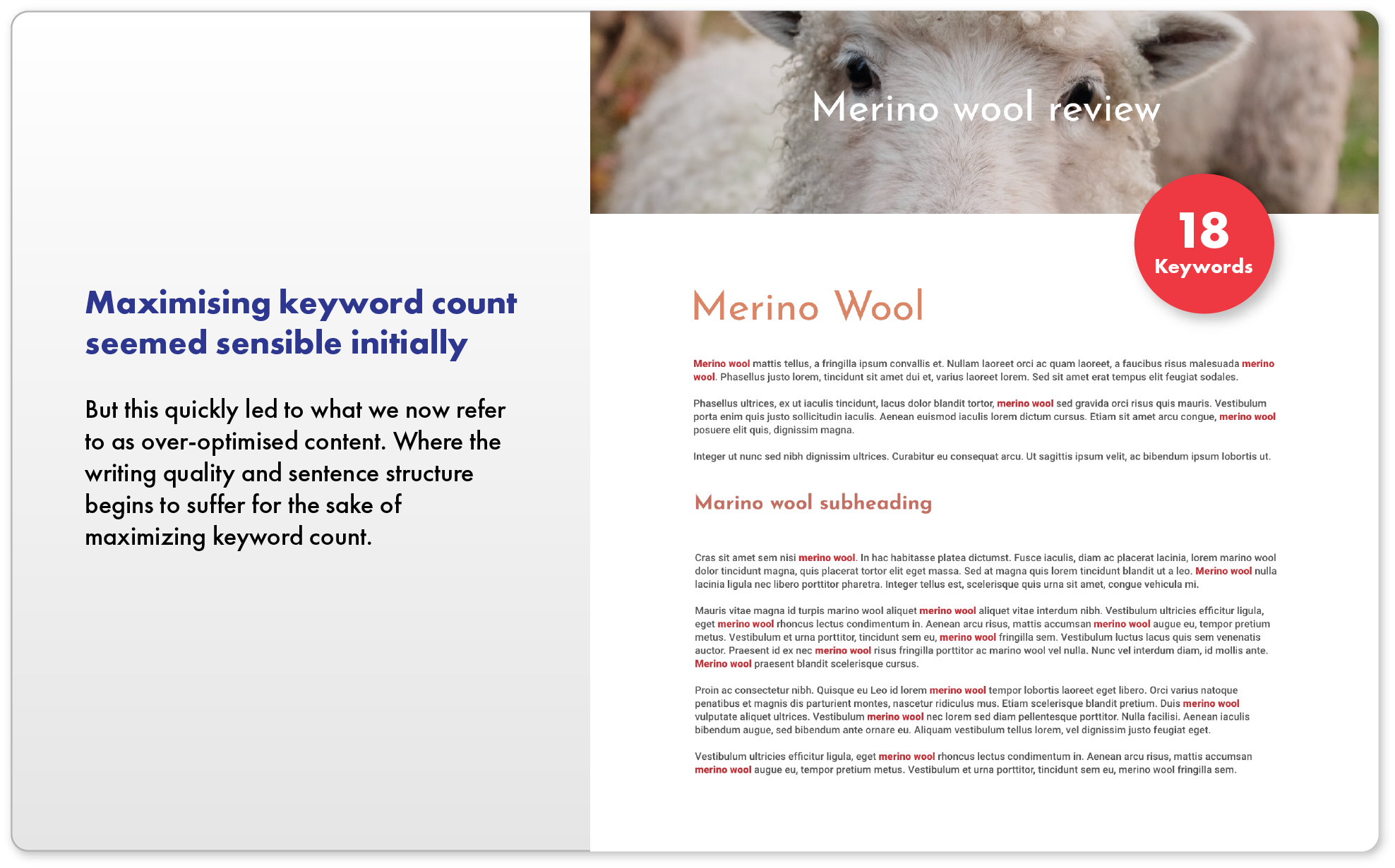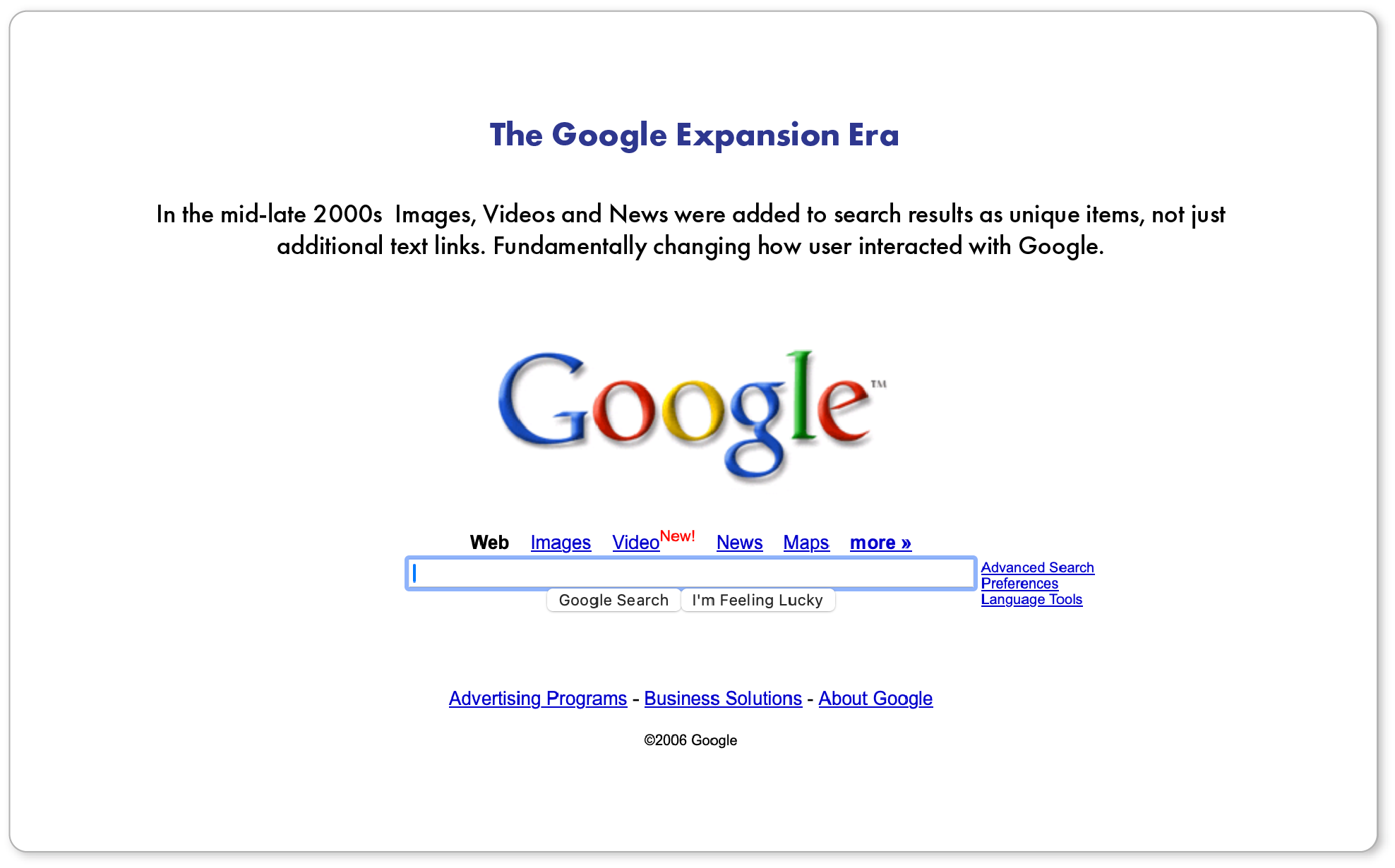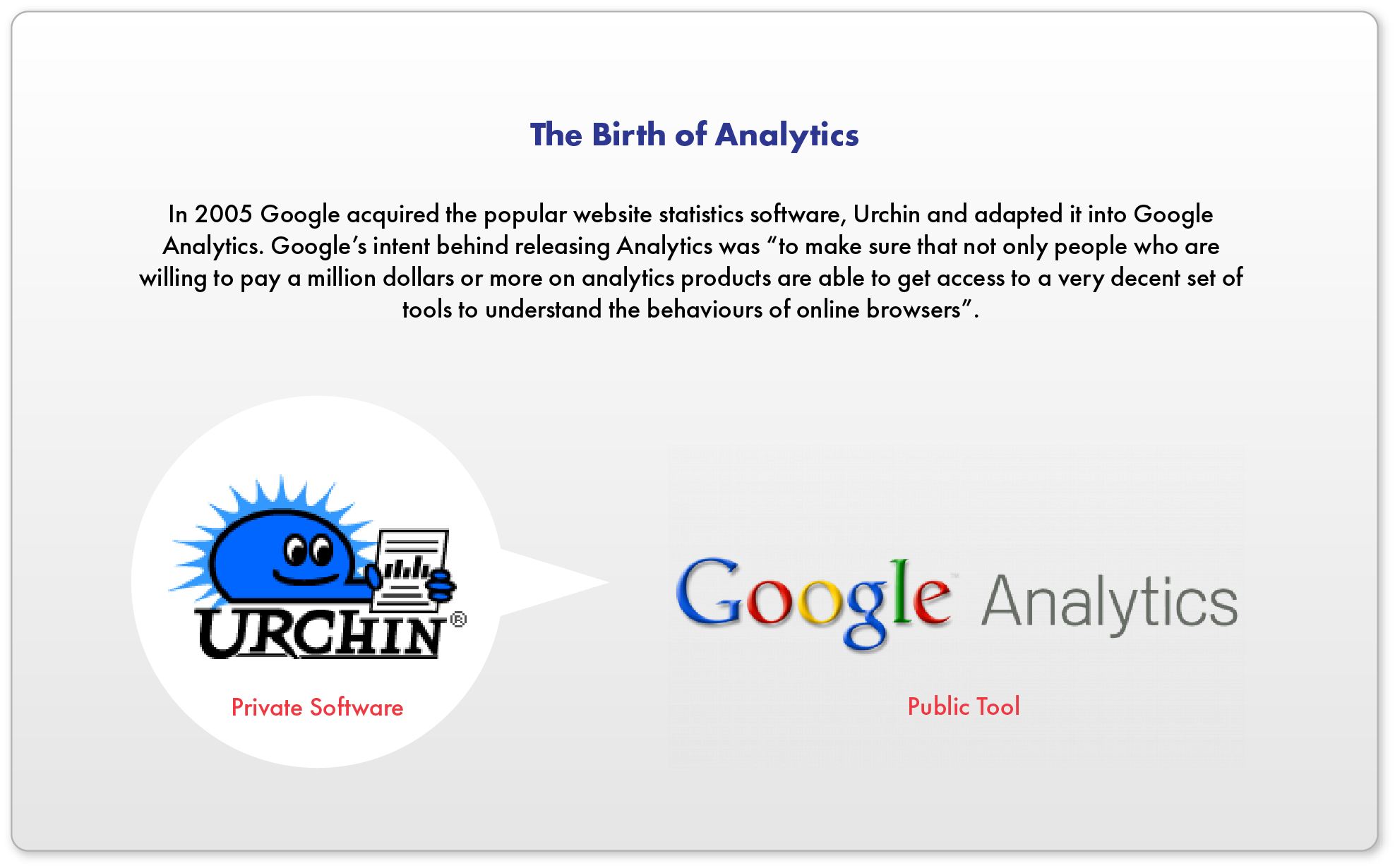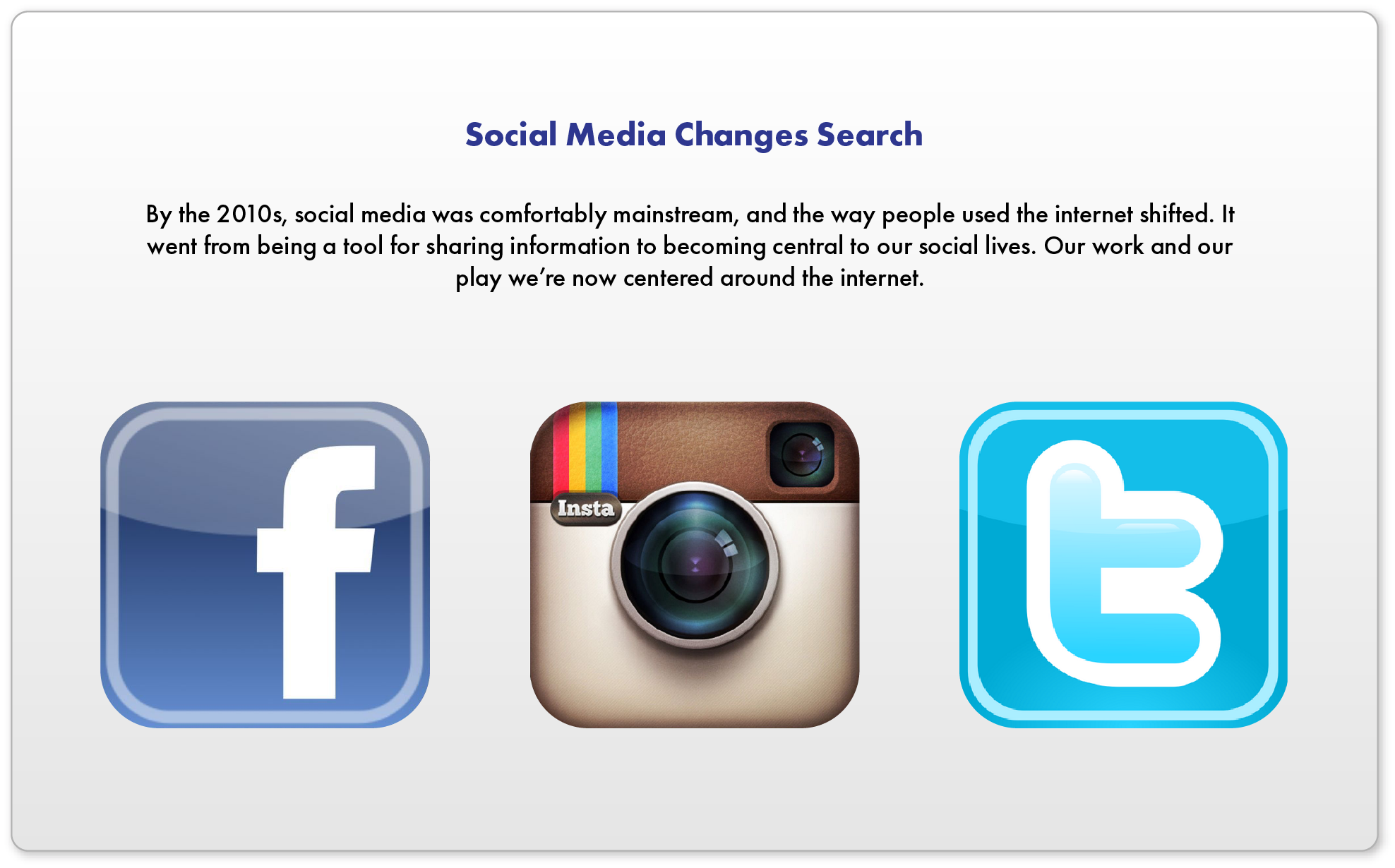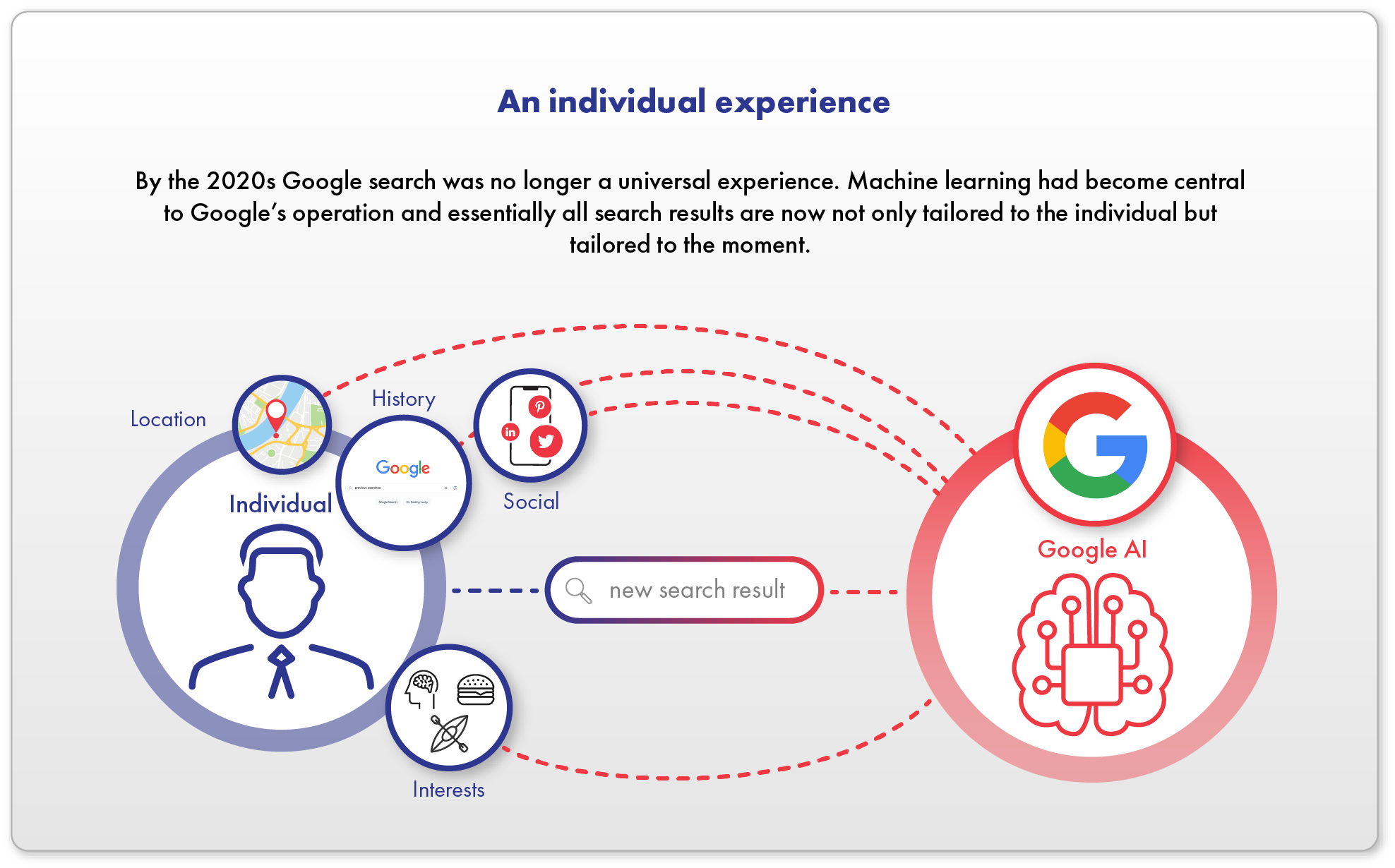The History of SEO
The rules for SEO are constantly changing and the reason is simple.
Google needs to regularly edit and adjust how it provides search results to satisfy their user base. So they can keep selling ads. If people aren’t finding what they need on Google, they’ll stop using it and Google will lose ad revenue.
Google is honest about the broad strokes of these changes but keep the finer details close to their chest. However, through technical insights or trial and error, crafty SEO’s always figure out how to continue creating content that pleases the Google algorithm.
While this is very helpful for digital marketing, it doesn’t always result in the best outcomes for users. Once the secret is out and everyone knows how to ‘beat the algorithm’, search results can shift from being the best fit for the search query, to the most optimised.
As we mentioned in our recent article on blogging for SEO in 2024, Google search results aren’t as good as they once were. With many people pointing to Ads and SEO as the cause.
What does this mean for Google, SEO and digital marketing going forward?
As Maya Angelou said: “You can’t really know where you’re going until you know where you have been”, so let’s look back at the history of SEO.
A history of SEO, from the beginning.
Unlike the hyper-stimulating, smorgasbord of information, entertainment, and consumerism it is today, the early internet felt more like a library. Quiet, structured, full of potential but a little confusing, and for the unfamiliar, very difficult to navigate.
Users went online hopeful to find the information they needed but unsure exactly where to look. You could find it by chance, but if you didn’t know exactly where to go (often by directly typing out the URL), you could spend hours looking. And with dial-up internet, this could be a slow process.
Search engines were a game changer in helping people find new websites and information relevant to their interests. And of course, as soon as such directories were available, people wanted to know how their website could appear first on the list.
And SEO was born.
The requirements for early SEO were simple and contained many metrics we still use today:
- Word count – Suggests thorough or more-worthwhile information.
- Correct HTML tags – The page and its contents are easier to understand.
- Internal and external links – Indicates quality content and/or further value.
- Maximised keyword count! – In this era keywords were king!
These simple factors created the first two downsides to SEO; link exchanges and keyword spamming.
Link exchanges.
Link exchanges started innocently. With web creators with similar content offering to link to each other’s websites, to the benefit of both parties. Reminiscent of early social media users offering like for like (#L4L) or follow or follow (#F4F) to build their audiences.
But it quickly became a spamming endeavor, with unsolicited emails being sent around en masse offering to provide backlinks. Like the dodgy ‘directories’ of modern SEO, these backlink sites often did more harm than good. And the constant emails were simply annoying for web users.
More keywords means more power.
As with link exchanges, maximising keyword count seemed like a sensible tactic initially. If website A mentions this keyword more times than website B it must be more relevant! But this quickly led to what we now refer to as over-optimised content. Where the writing quality and sentence structure begins to suffer for the sake of maximising keywords.
This is why readability and quality are so important to modern SEO.
While initially just slightly frustrating. Keyword flooding truly became an issue in the early 2000s with the rise of blogging platforms and Google’s introduction of AdSense.
Blogging for SEO and spam content.
Simple requirements for SEO, easy to use blogging platforms and a new option to make money from ad clicks. Created an epidemic of spam blogs. With minimal coding knowledge, anyone could make a quick buck by creating shallow, soulless websites filled with low-quality content, each crammed to the brim with keywords.
While a similar version of this tactic remains to this day in the form of niche, for-profit blogging. Google was quick to tighten up their systems to penalize low-quality content and the over-optimisation of keywords.
During this time Google also introduced more sophisticated inputs for their algorithm. Taking end-user data into consideration. Such as search history, interests, and geographic location to build a user profile and therefore serve more curated results.
For example, prior to the introduction of local search it wasn’t uncommon for someone in Adelaide to search for ‘Top Thai Restaurants’ and get results from Melbourne. Which was frustrating for users.
The Google Expansion Era
In the mid-late 2000s Google entered their expansion era. Shifting away from being just a search engine to the all-encompassing, demi-god of the internet.
Around this time Images, Videos and News were added to search results as unique items, not just additional text links. Fundamentally changing how user interacted with Google.
Prior to this, Google was the lobby of the internet, you arrived hoping to be directed where you wanted to go. From here, it started becoming the destination. Much of the information you needed was available on the first page of Google, no need to search through multiple pages of links to find what you were after.
This changed user habits and expectations and began putting even more pressure on SEOs to achieve a first page ranking.
Let’s get technical
This era also made more data available for users with the release of Analytics and Webmaster tools (now Search Console).
Google acquired the popular website statistics software, Urchin in 2005 and adapted it into Google Analytics.
Available since 1998, Urchin was a game changer for marketers because it allowed them to view the technical information behind their websites in an easy-to-understand manner.
Google’s intent behind releasing Analytics was “to make sure that not only people who are willing to pay a million dollars or more on analytics products are able to get access to a very decent set of tools to understand the behaviours of online browsers”.
This was clearly s game-changing move as V1 of Analytics kept crashing due to user demand.
Webmaster Tools was a similarly pivotal tool brought out by Google in the mid 2000s. Webmaster tools gave users specific insights into how their websites were preforming in search results. Featuring many of the tools we use in modern SEO such as search queries, backlinks, indexation and crawling updates.
On top of this, Webmaster tools also allowed people to create XML sitemaps.
An XML sitemap is a web file that lists the pages you want search engines to index and provides them with extra information about your content (include semrush blog link). This allows you to ensure the pages you want to appear on Google are regularly crawled. While pages that aren’t necessary or helpful to SEO, such as terms and conditions, or contact page can be ignored.
Spring Cleaning.
With all these new tools, data insights, and ways to make a money from your website. Google search results became a little messy in the late 2000s and it was time for a major clean-up.
Arguably this is where Google shifted from being a democratic platform and started choosing what results users were given. Google started giving preference well known or well-established brands over smaller ones, because they were seen as socially trustworthy.
This is where we see Authority start to develop as a major metric for SEO.
Site-speed also became a consideration for technical SEO. You might be able to get your website to rank well through keywords, content quality and authority. But if it is poorly built, or so crammed with ads it doesn’t load quickly, you’ll struggle to improve your ranking. Websites that don’t load efficiently are frustrating for users so why would Google want to promote them.
Social Media changes the game.
By the 2010s, social media was comfortably mainstream, and the way people used the internet shifted. It went from being a tool for sharing information to becoming central to our social lives. Our work and our play now centred around the internet.
To this day Google denies that social media has a direct influence on SEO, but with how central social media is to the modern internet, this is hard to believe. And there is strong anecdotal evidence to suggest otherwise.
Also, in this time-period Google released Schema, a coding language to help search engines better understand website content. Schema helps Google provide key information upfront, therefore providing better answers in SERP. Obviously this is great for Google, so web developers and digital marketers who understand schema and can apply it effectively to their websites have an advantage in SEO.
A smart approach.
Another major shift occurred in the late 2010s as smartphones became the norm and people were increasingly accessing the internet on their phones.
This created a demand for mobile first website design. Simply because user habits had changed and that’s what the market required. Today most websites are mobile friendly, and those that are not stand out like a sore thumb.
In line with these trends, Google shifted their algorithm to reward high performing, mobile friendly design. Mobile speed and adaptability became a key consideration for SEO and site health. Very significantly this is also when mobile first indexing was introduced. An aspect that is often overlooked by SEOs today.
An individual experience.
By the 2020s Google search was no longer a universal experience. Machine learning had become central to Google’s operation and essentially all search results are now not only tailored to the individual but tailored to the moment.
All Google products are now integrated. Meaning they have a very clear picture of who you are, what you like and therefore, how best to advertise to you.
And advancing AI technology is likely to take things even further. Drastically improving image and voice search. Potentially overcoming language barriers, or even going so far as to be able to predict what information you need or products, you’re likely to buy before you do.
Wrapping up.
Google is a tool most of us use on a daily basis and although it may cause frustrations at times. By looking back at how far it’s come and how massive some of the changes have been, it’s extremely impressive.
Knowing this history is incredibly helpful to modern digital marketing because it provides context as to why we have certain tools or why certain metrics are important. If our approach to SEO is simply to check the boxes, we’re likely to miss out on little details that could mean the difference between exceeding our goals or simply meeting them.
Sources:
Hubspot | SEO conversion optimisation
Search Engine Journal | SEO History
Search Engine Journal | Why Google search is getting worse
2Stallions | The evolution of SEO
Tweak your Biz | Why is Google search becoming worse
Semrush | XML sitemaps
Semush | Mobile first indexing
LinkedIn | Brief History of Google Analytics
AI Contentfy | Tracing the evolution of Google Search Console
TopDraw | What is website Schema
OpenMind BBVA | How the internet changed everyday life
Freedom Consulting Group | The first search engines

